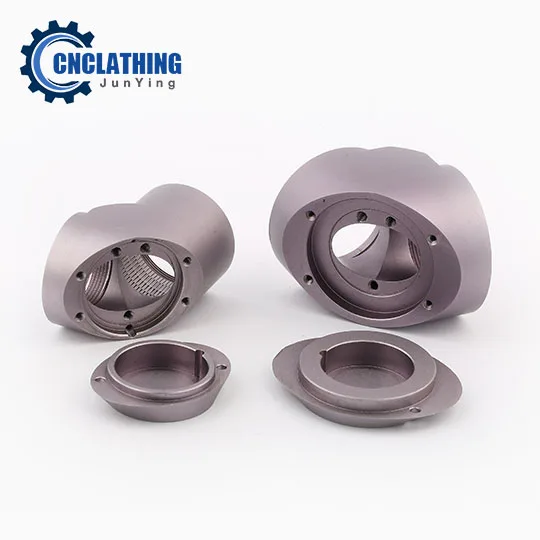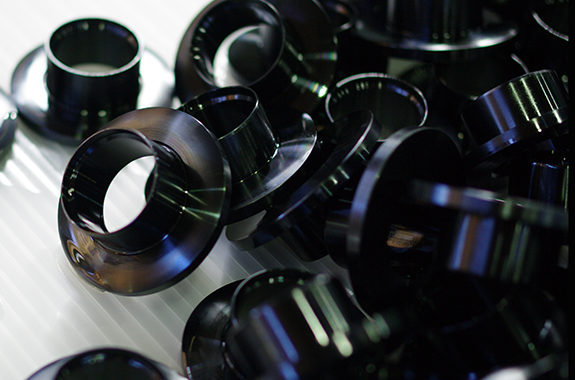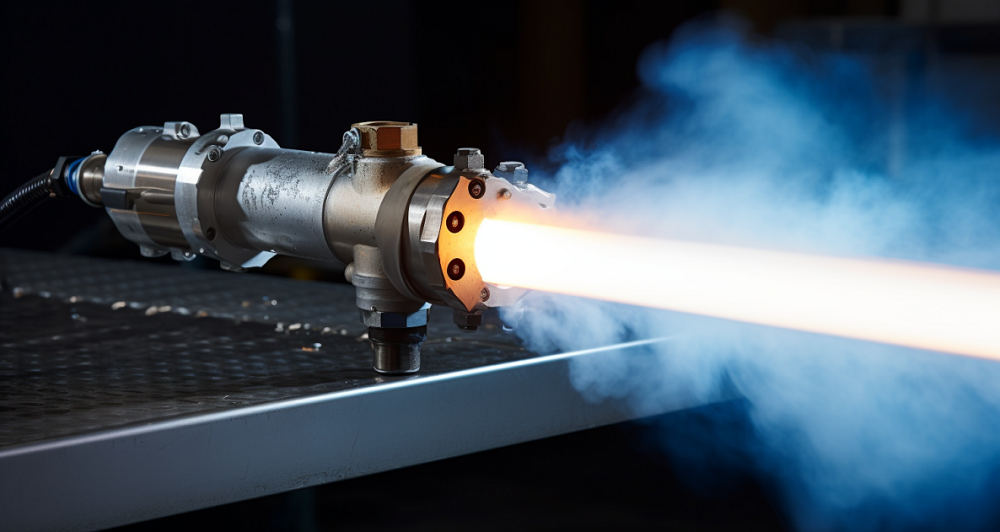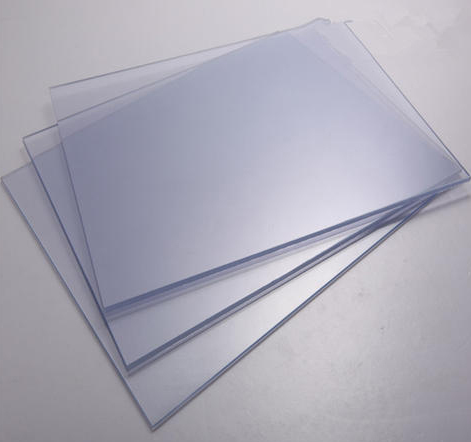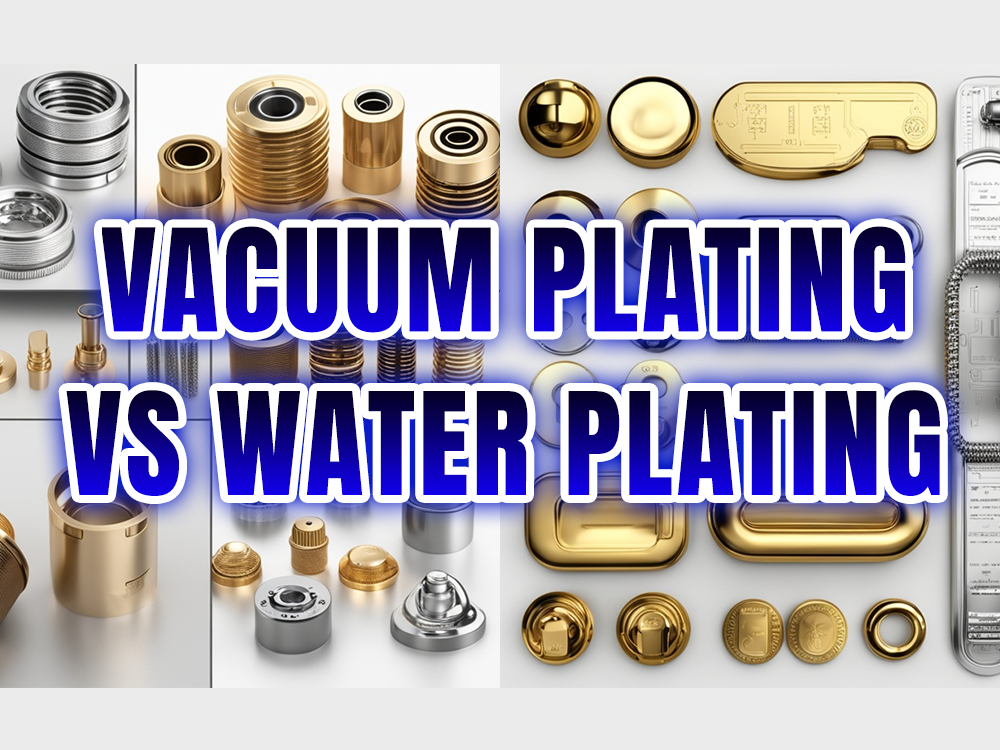Alodine is an important metal surface treatment technology that improves corrosion resistance and adhesion for metal surfaces. What is the process of Alodine finish, and when do you need it? Let’s get into an overview of the Alodine/chem film/chromate conversion coating, covering its types, classes, standards, processes, thickness, and comparison with anodizing, etc. Junying is capable of providing Chromate conversion coating surface finishing service for your aluminum machined parts or other components.
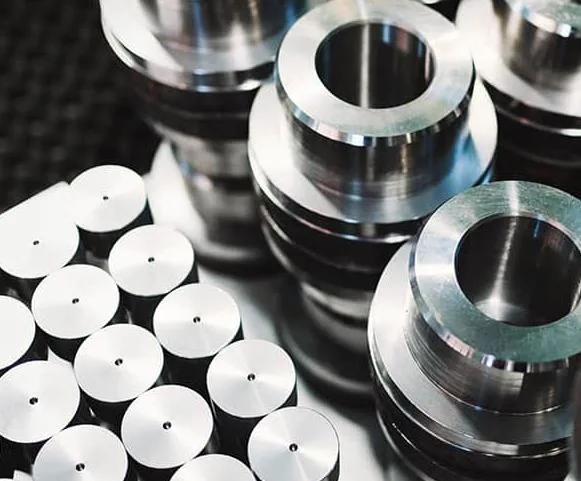
What Is Alodine (Chem Film) Coating?
Alodine coating, also known as chem film or chemical film, refers to a chromate conversion coating that is primarily applied on the aluminum surface to prevent corrosion. Actually, Alodine® is the trade name. So, Alodine finish, chem film, and chromate conversion coating are the same process under different names.
Unlike plating, which deposits a new layer on the metal, Alodine coating chemically reacts with the metal surface itself, transforming it into a thin, protective layer. The process involves applying a solution containing chromates that dissolve and form a gel-like coating, bonding tightly to the metal. This results in a corrosion-resistant surface without adding noticeable thickness or altering the dimensions of the treated parts.
What Is Alodine (Chem Film) Used For?
Chem film coating finds widespread use in various industries. It is commonly applied to heat sinks, automotive wheels, and numerous aluminum parts encountered daily. The aerospace industry relies on Alodine coatings for components such as aircraft hulls, landing gear, control surfaces, and shock absorbers, as it not only has excellent corrosion resistance but also strong adhesion that reduces the risk of peeling. Other fields benefiting from Alodine finish include electrical, military, defense, and maritime sectors. Besides aluminum, metals like copper, magnesium, cadmium, tin, zinc-plated steel, and iron can also receive chromate conversion coatings.
Alodine Coating Thickness
The typical thickness of an Alodine or chem film coating on aluminum is extremely thin, usually ranging from about 0.00001 to 0.00004 inches (0.25 to 1 micrometer). This coating forms a very thin, gel-like, amorphous layer that chemically transforms the metal surface without adding any noticeable bulk, so the part dimension can be practically unchanged. Because of its minimal thickness, measuring the coating directly is difficult, and adhesion is often assessed indirectly through the performance of paint or primer applied afterward. Its unique gel-like nature also offers a self-healing ability, where soluble chromates from nearby areas can slowly cover scratches or abrasions.
Types and Classes of Alodine Finish (Chem Film)
According to the MIL-DTL-5541 (current MIL-DTL-5541F) standard, there are two main types and classes of Alodine: Type 1, Type 2, Class 1A & Class 3. There are also other types and specifications of Alodine finishes, such as AMS-2473 and 2474, MIL-C-81706, and AMS-C-5541.
MIL-DTL-5541 Type 1
Type 1 is characterized by hexavalent chromium, a chemical composition that was widely used in the past but is now tightly regulated due to environmental and health concerns. This type of coating forms a gold or brown film but may appear clear without color. However, its use is restricted in many areas due to the need for special permits and ventilation systems to handle the hazardous chemicals.
MIL-DTL-5541 Type 2
Type 2, on the other hand, is a coating without hex-chromium, which uses trivalent chromium, titanium, or zirconium instead of hexavalent chromium. This type of coating is widely accepted across many industries and is considered a safer and more environmentally friendly alternative. It typically forms a faint blue color, and its application process is faster, simpler, and more energy-efficient than Type 1.
MIL-DTL-5541 Class 1A
MIL-DTL-5541 Class 1A provides a relatively thicker coating for maximum corrosion protection for both painted and unpainted surfaces. Class 1A is more suitable for applications requiring high protective performance, such as aerospace equipment and military hardware.
MIL-DTL-5541 Class 3
MIL-DTL-5541 Class 3 typically provides a thinner coating with lower electrical resistance. This type of coating may appear lighter or less obvious due to its thickness. Class 3 coatings are widely used in the aviation industry, such as for the protection of fasteners to prevent fuel leakage from affecting the coating. It is also commonly used in electronic devices to provide electromagnetic interference shielding and ensure good performance of coatings in high-frequency electrical applications.
Aluminum Conversion Coating Standards
| Standard | Description |
|---|---|
| MIL-DTL-5541 | A military specification for chemical conversion coatings on aluminum and aluminum alloys, commonly used for chem film coatings. |
| MIL-DTL-81706 | A military specification for chemical conversion materials used for coating aluminum and aluminum alloys, intended for manufacturers of the chemicals. |
| ASTM B449 | A standard specification for chromates on aluminum, similar to MIL-DTL-5541 Type 1. |
| ASTM B921 | A standard specification for non-hexavalent chromium conversion coatings on aluminum and aluminum alloys, similar to MIL-DTL-5541 Type 2. |
| AMS 2473 | An aerospace specification for general-purpose chemical film treatment for aluminum alloys, similar to MIL-DTL-5541 Class 1A. |
| AMS 2474 | An aerospace specification for low electrical resistance chemical treatment for aluminum alloys, similar to MIL-DTL-5541 Class 3. |
| ISO 8081 | An aerospace process standard that describes requirements for producing and testing chemical conversion coatings for aluminum alloys. |
| BAC 5719 | A Boeing Process Specification for chemical conversion coatings for aluminum and aluminum alloys, similar but not identical to MIL-DTL-5541. |
| MIL-C-81751 | A military specification, mainly involving metal-ceramic coatings, is used to provide corrosion and oxidation protection for metal substrates. |
| SJ 20813-2002 | A military specification for chemical conversion coatings formed on the surfaces of aluminum and aluminum alloys. |
Alodine Process – How Is Chem Film Applied?
Here are the detailed processing steps for the two main types of Alodine coating.
MIL-DTL-5541 Type 1 Alodine (Chromate Conversion Coating) Process
- Cleaning: The aluminum part is thoroughly washed with a cleaning solution to remove dirt, oils, and any manufacturing residues.
- Rinse: The part is rinsed with water to remove all traces of the cleaning agents, often verified by a water-break-free test.
- Etching (Optional): Specific areas of the part may be selectively etched to prevent coating or modify the surface texture.
- Rinse: The part is rinsed again to stop the etching reaction and remove any residual chemicals.
- Deoxidation: The part undergoes deoxidation to eliminate surface oxides and contaminants, ensuring a clean surface for coating.
- Rinse: Excess deoxidation chemicals are washed off thoroughly with water.
- Chromate Coating: The part is immersed in a hexavalent chromium bath where the conversion coating forms immediately; immersion time varies by part size and chemistry.
- Rinse: Residual chemicals from the coating bath are rinsed away with water.
- Warm Rinse: A final warm water rinse completes the process and prepares the part for drying or further finishing.
MIL-DTL-5541 Type 2 Alodine (Chromate Conversion Coating) Process
Acid Clean Process:
- Acid Cleaning: The aluminum part is immersed in an acidic solution designed to remove oils, dirt, and light surface oxides, preparing the surface for coating.
- Rinse: The part is thoroughly rinsed with water to eliminate any residual acid and prevent contamination of subsequent baths.
- Chromate Conversion Coating: The part is immersed in a trivalent chromium-based chem film bath, where the thin protective conversion layer forms on the surface.
- Rinse: After coating, the part is rinsed again to remove any excess chemical residues from the coating bath.
- Second Rinse: A final rinse ensures complete removal of residual chemicals and prepares the surface for drying or further processing.
Alkaline Clean Process:
- Alkaline Cleaning: The part is cleaned in an alkaline solution that removes grease, oil, and contaminants, leaving the surface ready for deoxidation.
- Rinse: Water rinsing follows to clear away any alkaline residues, preventing interference with the next step.
- Deoxidation: A chemical deoxidizing step removes surface oxides and promotes better adhesion of the conversion coating.
- Rinse: The part is rinsed again to wash off deoxidizing chemicals and avoid carryover into the coating bath.
- Chromate Conversion Coating: The aluminum is immersed in the trivalent chromium conversion bath, forming a thin protective coating that offers corrosion resistance and adhesion properties.
- Rinse: Water rinsing removes excess coating chemicals.
- Second Rinse: A final rinse step ensures the surface is clean and free of any residuals, completing the process and preparing the part for drying or subsequent finishing.
Common Alodine Materials & Products
Alodine 1200
Alodine 1200 (Alocrom 1200) is a hexavalent chromium-based chemical conversion coating product developed by Henkel, widely recognized in industries such as aerospace, military, and high-end electronics. It belongs to the category commonly known as “hexavalent chromate conversion coating” or simply “chromate yellow iridite.” Although Alodine 1200 is not a formal “Type” or standard grade on its own, it corresponds closely to the Type 1 classification in the MIL-DTL-5541 military specification. The coating appears in different colors based on the formulation, like deep yellow and orange. The lighter the shade, the higher the conductivity. The deeper the color, the stronger the corrosion resistance. It is suitable for aluminum parts used in aircraft frames, fuel systems, radar housings, automotive powertrains, and naval superstructures, where both protection and conductivity are critical. After treatment, these parts can be painted or left with the chem film as a final conductive protective layer.
Alodine 600
Alodine 600 is another common chromate conversion coating applied to aluminum and its alloys. The coating produced by Alodine 600 ranges in color from a light, iridescent gold to tan. This hexavalent chromium-based coating provides excellent protection for unpainted aluminum surfaces and offers strong paint adhesion. It is particularly valued in applications requiring low electrical resistance, such as electrical bonding. The product can be applied by immersion, spraying, or brushing and complies with stringent military standards like MIL-DTL-5541 and MIL-DTL-81706, ensuring its suitability for critical aerospace and defense applications.
Alodine 5200
Alodine 5200 is a typical example of Type 2, specially developed for aluminum and other non-ferrous alloys. It can be applied using either spray or immersion methods. This coating forms an excellent base layer that promotes strong bonding of adhesives and organic finishes such as paints or primers. Designed as an environmentally safer alternative to traditional hexavalent chromium coatings, Alodine 5200 meets the growing demand for chromium-free surface treatments while maintaining effective corrosion resistance and surface preparation qualities. It is widely used in industries where regulatory compliance and sustainability are important, especially in the aerospace and manufacturing sectors.
Alodine 600 vs Alodine 1200
The primary difference between Alodine 600 and Alodine 1200 is the thickness of the chromate conversion coating they produce, which is controlled by immersion time rather than chemical composition, as both use the same fundamental chemicals. Alodine 1200 typically creates a thicker coating and is classified as Class 1A, making it suitable for applications needing higher corrosion resistance, such as structural aerospace components. In contrast, Alodine 600 produces a thinner film, classified as Class 3, which is ideal for electrical bonding purposes where lower electrical resistance is essential. Both products exhibit similar color ranges from golden to tan and meet the same military specifications, but Alodine 600 is often chosen when electrical conductivity and a thinner protective layer are priorities, while Alodine 1200 is favored for robust corrosion protection and paint adhesion.
Best Alodine/Chem Film Coating Practice at Junying
If you are looking for a chromate conversion coating company, Junying is the right place. Our highly trained technicians will select the optimal material type and purity level for your specific application. Every step of the coating application receives close attention, from effective rinses that prevent tank contamination to precisely monitored acid activation and pH levels. Partner with Junying Alodine/Chem Film/Chromate Conversion metal finishing service and experience the benefits of an optimized production line. We’ll process your parts with care to deliver a flawless surface, then apply the protective chromate conversion coating through a process tailored for maximum performance.
Alodine vs Anodize: What Are the Differences and Which One to Choose?
Alodine coating and anodizing are two different types of surface treatment methods, but both of them can be applied on aluminum to improve the material properties. The alodining process applies a thin, protective chromate film onto aluminum surfaces without using electrical current, enhancing corrosion resistance while preserving electrical and thermal conductivity. Anodizing is an electrolytic process where aluminum acts as the anode in an acid bath, producing a hard, durable aluminum oxide layer that significantly increases corrosion resistance and wear resistance and allows for color dyeing. Below are the key differences between chem film and anodize.
1. Process Principle
Alodining is a chemical reaction that forms a protective film through immersion in a chemical bath at room temperature, without electrical input. In contrast, anodizing uses electricity to drive an electrochemical reaction in an acid electrolyte, creating a thicker, harder oxide layer on the aluminum surface.
2. Coating Thickness and Durability
The protective layer from alodining is very thin and relatively soft, providing moderate corrosion protection but low abrasion resistance. Anodizing results in a thicker, much harder oxide coating that is highly resistant to wear, scratches, and corrosion, making it suitable for harsher environments.
3. Cost and Complexity
Alodining is less expensive and simpler to perform, requiring minimal technical skills and no special equipment other than chemical baths. Anodizing involves higher costs due to the need for electrical power, acid baths, specialized equipment, and skilled operators to control the electrochemical process.
4. Electrical and Thermal Conductivity
Because alodine coatings are thin and not electrically insulating, aluminum retains its original electrical and thermal conductivity after alodining. Anodized layers behave like ceramic coatings, which significantly reduce electrical and thermal conductivity, often necessitating masking in applications requiring electrical contact.
5. Color and Aesthetic Options
Alodined aluminum typically shows clear or yellowish-brown hues, with limited color variation. Anodizing offers a broad palette of colors by allowing dyes to penetrate the porous oxide layer, resulting in uniform, decorative finishes with options including black, blue, red, and more.
6. Surface Appearance and Texture
Neither process hides surface imperfections, so the aluminum surface must be prepared carefully beforehand. However, anodizing often yields a smoother, more uniform finish that can resist discoloration and fading over time better than alodine coatings.
7. Applications and Suitability
Alodining is often used for parts requiring precise fits, electrical grounding, or as a primer layer before painting, especially where cost or conductivity is critical. Anodizing is preferred for components exposed to harsh conditions, needing long-lasting corrosion protection, improved wear resistance, or decorative finishes.
8. Environmental and Safety Considerations
Both processes involve chemicals that require careful handling and disposal. Alodining typically uses hexavalent chromium or trivalent chromium compounds, which pose environmental and health risks. Anodizing also uses acids and electrical energy but tends to have more regulated waste management requirements due to the electrolyte and rinse waters.
9. Effect on Dimensions
Alodining produces an ultra-thin film that does not noticeably alter the dimensions of parts, making it ideal for applications with tight tolerances. Anodizing adds a thicker oxide layer that can affect part dimensions and may require design adjustments to maintain precise fits.
10. Maintenance and Longevity
Alodine coatings are less durable and may be considered temporary or for intermediate protection, often requiring repainting or recoating over time. Anodized surfaces provide long-term protection against corrosion and wear, reducing maintenance needs and extending the service life of aluminum components.
Chem film vs anodize, which should you choose?
- Application Requirements: If the aluminum part needs to be electrically grounded, Alodine may be the better choice. If the part requires a more durable finish, anodizing may be the better option.
- Cost and Technical Expertise: If budget is a concern, Alodine may be the more cost-effective option. However, if the application requires more technical expertise, Anodize may be the better choice.
- Environmental Impact: If sustainability is a concern, Type II Alodine and anodizing aluminum may be worth considering more compared to Type I.
Is Alodine Electrically Conductive?
Alodine itself is not electrically conductive – it is a chromium oxide coating that forms an insulating barrier layer. However, the Alodine coating permits the underlying aluminum substrate to remain electrically conductive. This is because the thin Class 3 Alodine coating is not thick enough to block the natural conductivity of the bare aluminum metal. It is more accurate to say that a thin Class 3 Alodine coating allows the retention of conductivity in the aluminum part by not completely insulating the metal substrate.


